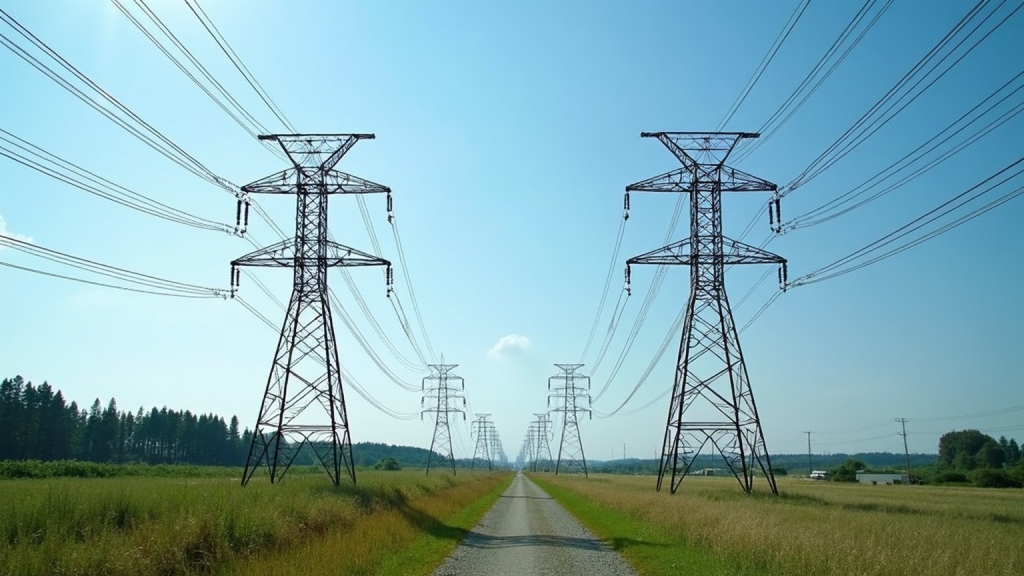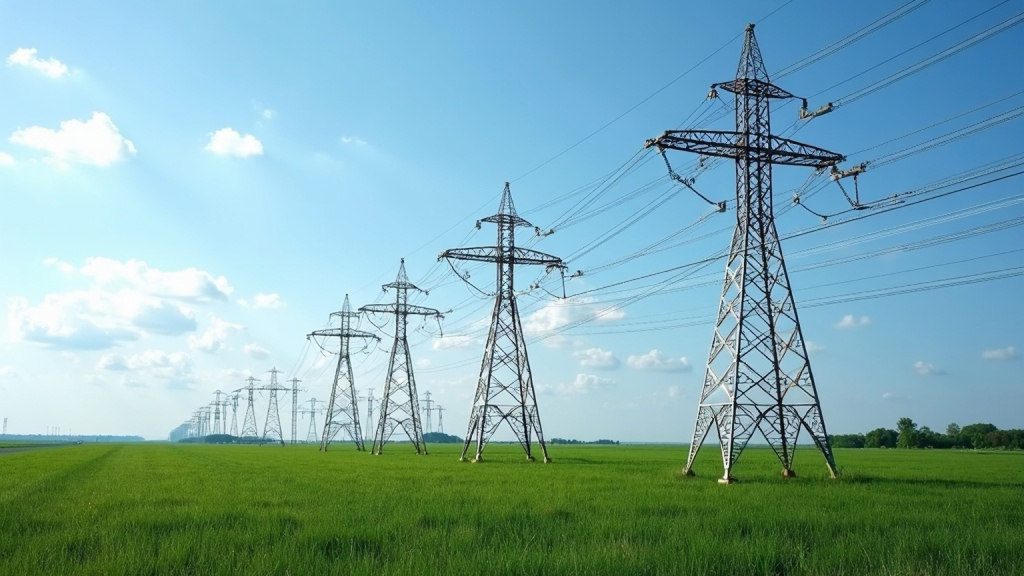Challenges in High-Voltage Power Transmission: How to Overcome
2025-02-07

Power transmission at elevated voltages functions as the backbone that distributes electrical energy over extensive networks to serve residential, industrial, and commercial consumers. Multiple engineering challenges together with environmental constraints and economic restrictions complicate this process. The following article describes major challenges in high-voltage power transmission by analyzing technical complexity with environmental consequences alongside economic challenges and modern grid interconnection. This discussion examines how power grid stability and safety performance together with renewable energy infrastructure affect the integration process.
Power Grid Stability: A Constant Challenge
High-voltage power transmission faces its greatest challenge when striving to keep power grids operationally stable. When electricity travels lengthy routes it encounters several power loss effects that generate unstable grid performance. Stability problems occur throughout the power transmission system because of various elements including load conditions weather variability and system transmission characteristics.
Electrical power outages result from voltage fluctuations that occur when transmission network disturbances meet sudden load changes thus causing both equipment damage and power grid cascading breakdowns. Transmission system designs need to incorporate capabilities for dealing with abrupt changes in voltage while meeting criteria for both power quality and system reliability.
Voltage Control: Ensuring Consistent Power Supply
High-voltage power transmission faces two significant risks when trying to regulate voltage levels. Voltage control operates as a vital element to safeguard electrical equipment against both overvoltage and undervoltage conditions that produce equipment degradation and power distribution interruptions. The system operates efficiently and maintains stability when voltage stays within functional specifications, especially in locations where power usage rates change unpredictably.
Long-distance transmission lines experience voltage drops when the resistance of their conductors generates these losses. High-voltage systems benefit from three solutions which include voltage regulation devices along with tap-changing transformers and dynamic reactive power compensation to manage voltage problems. By implementing these measures the electricity system maintains proper voltage limits while providing better power quality and protecting electrical assets from harm.
Line Losses: Minimizing Energy Waste
All electrical transmission systems contain built-in power losses that appear in the cables. The dissipating heat occurs when power produces resistance within these conductors resulting in power loss. The longer the transmission distance and the higher the voltage, the greater the line losses.
The decrease in line losses stands as an essential measure that power utilities must address. Improvements in conductor manufacturing involving high-temperature superconductors combined with transmission line efficiency advances represent ways to decrease these energetic losses. HVDC transmission systems deliver substantially lower power line losses than HVAC systems across long transmission distances.

Insulation: Overcoming Material Challenges
The protection of electrical equipment and personnel needs insulated transmission lines as a critical requirement to stop electrical discharges during high-voltage operations. Transmission power lines operate under extreme environmental conditions that weaken their insulating components. Temperature changes combined with exposure to moisture and ultraviolet rays harm insulation materials which creates potential failure risks that endanger safety.
The selection process for insulation materials stands critical to building up transmission system permanence and dependability. Scientists stay active with research into advanced insulation material development using polymer-based insulators and composite materials to enhance high-voltage transmission system longevity.
Conductor Design: Choosing the Right Material
High-voltage transmission efficiency depends heavily on proper conductor design choices. Transmission conductors need to maintain high electric current levels while avoiding dangerous temperature elevation. Material selection for conductors determines the performance capabilities of transmission systems.
Power conductors dominate market application with copper and aluminum being prominent choice materials. Advancements in material science seek new options for power transmission through the development of high-strength aluminum alloy and superconductors because system efficiency requirements continue to escalate. These materials allow transmission systems to hold greater currents together with reduced power loss even while boosting system performance levels.
Environmental Impact: Balancing Green Energy and Infrastructure
High-voltage power transmission gives us the ability to distribute electricity long distances yet creates noteworthy environmental consequences. Distribution power grid infrastructures need vast stretches of land for transmission structures yet such needs frequently result in disruptions of regional ecosystems and wildlife habitats. Cities frequently experience visual landscape modifications because of transmission tower infrastructure and power line installations which can trigger community struggles with aesthetics.
Health-related effects from electromagnetic fields generated by high-voltage transmission lines continue to spark research for better understanding. Available studies about EMF exposure neither show clear evidence of disease connection nor address public discomfort regarding health issues.
Power companies fight environmental effects by developing underground transmission frameworks that minimize both land requirements and visibility concerns. These power systems present installation obstacles alongside complex operating dynamics that result in elevated costs and intricate functionality.
Right-of-Way Acquisition: Legal and Regulatory Challenges
The procurement of right-of-way permits for transmission line construction takes an extended period and becomes expensive. Following normal verbalization when possible this article examines how ROW acquisition involves negotiations with landowners together with permit procurement and adherence to local guidelines. Acquiring right-of-way permissions becomes especially complex when projects need to pass through dense human neighborhoods or ecologically important areas.
High-voltage transmission network expansion meets significant challenges because government administration shapes their development with rules and mandated practices. High-voltage transmission project development meets regulatory compliance needs yet the permit acquisition process slows infrastructure building primarily through public resistance against new developments.
How to Tackle the Challenges in High-Voltage Power Transmission Systems?
Electricity distribution networks based on high-voltage power transmission serve as essential pathways for transporting electricity from its generation point to all consumption points. Modern power transmission frameworks encounter several operational problems which lead to decreased efficiency alongside reliability and compromising safety standards. To overcome such challenges the power industry needs technological advances alongside strategic planning along with careful management methods. Multiple approaches exist to deal with these difficulties.
Overcoming Technical Challenges:
High-voltage power transmission management faces one of its main difficulties when dealing with resistive loss effects throughout transmission lines. Reducing transmission line losses becomes possible through superconducting cables because these materials deliver electricity with exceptionally low resistance. Smart grid technology simultaneously enhances system performance and power flow monitoring while reducing operational losses.
Addressing Environmental Concerns:
The excessive environmental impact from high-voltage transmission equipment presents itself as both electromagnetic field interference and disruptions to land properties. Power transmission suppliers use underground cables to decrease land requirements while lowering visibility factors. Advanced monitoring systems allow controllers to optimize transmission systems efficiency and sustainable capabilities which results in reduced environmental impact.
Ensuring Safety:
A top priority in any high-voltage power transmission system is safety because it directly affects accident prevention and worker protection. To reduce potential hazards strict safety systems should include routine facility checks qualified workforce training and modern protection technology. Drone inspections together with robotic maintenance systems cut down human workers' contact with high-voltage equipment.
Enhancing Grid Resilience:
Power transmission systems require backup components and varied system networks to become resistant to natural disasters along with cyber attacks. The reliability of transmission networks can improve through infrastructure strengthening together with backup installation and real-time data analysis for failure prediction.
Policy and Regulatory Solutions:
Power transmission challenges require decisive measures from governmental policies and regulations. Established regulations regarding power grid development to maintain operational requirements that support long-term sustainability and operational efficiency.
Conclusion
The challenges in high-voltage power transmission are vast and varied, from technical issues like line losses and voltage control to environmental, economic, and safety concerns. Overcoming these obstacles requires innovation, investment, and collaboration across industries, governments, and communities. By embracing new technologies and regulatory frameworks, we can ensure that high-voltage power transmission systems remain reliable, efficient, and sustainable for the future. For more insights into the latest innovations in power transmission, visit XY Tower.

Hey, I’m Chunjian Shu
"X.Y. Tower: Reliable, innovative solutions for high-quality towers and electrical equipment with professional service.
